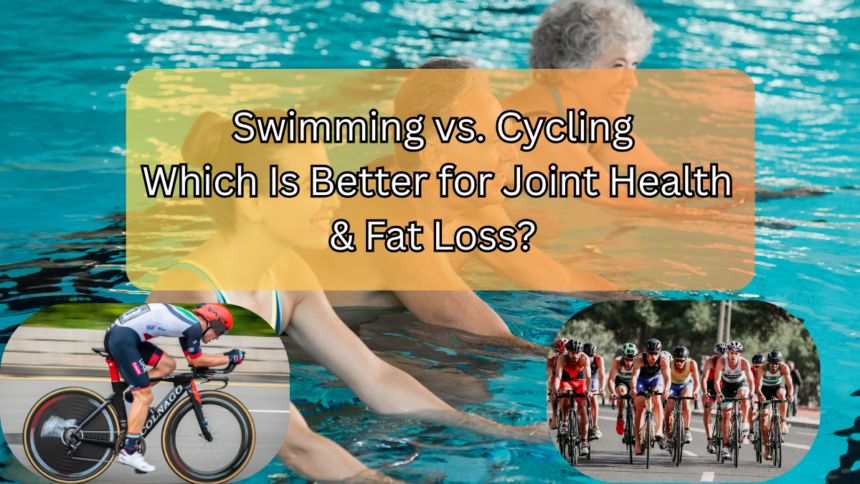Swimming vs Cycling
When it comes to low-impact cardio exercises, swimming and cycling are two of the most popular choices. Both are fantastic for burning calories, improving cardiovascular health, and protecting your joints—but which one is better for joint health and fat loss?
If you’re recovering from an injury, managing arthritis, or simply looking for a workout that’s easy on the knees and hips, this comparison will help you decide which activity suits your needs best.
The Great Debate: Swimming vs. Cycling for Joint Health
1. Impact on Joints
Both swimming and cycling are low-impact exercises, meaning they minimize stress on your joints compared to running or high-intensity workouts. However, they affect joints differently.
- Swimming:
- The water’s buoyancy supports up to 90% of your body weight, drastically reducing pressure on joints.
- Ideal for people with arthritis, back pain, or knee injuries.
- Movements are fluid, allowing for a full range of motion without jarring impacts.
- Cycling:
- While cycling is gentle on joints, it still involves some pressure on the knees and hips, especially if resistance is high.
- Proper bike setup (seat height, pedal alignment) is crucial to avoid strain.
- Best for those with mild joint discomfort but may not be ideal for severe joint issues.
Winner for Joint Health: Swimming (especially for those with chronic pain or injuries).
2. Calorie Burn & Fat Loss
If fat loss is your goal, both activities can be effective—but intensity and duration play a big role.
- Swimming:
- A 155-pound person burns about 372 calories in 30 minutes of vigorous swimming (front crawl).
- Engages multiple muscle groups (arms, legs, core), leading to higher overall energy expenditure.
- Cold water may slightly increase calorie burn as the body works to stay warm.
- Cycling:
- A 155-pound person burns about 298 calories in 30 minutes of moderate cycling (12-14 mph).
- Uphill or high-intensity cycling can push calorie burn up to 400-600 calories per hour.
- Great for targeting lower-body muscles (quads, hamstrings, glutes).
Winner for Fat Loss: It depends! Swimming burns more calories in a shorter time, but cycling can be more adjustable for intensity.
Tips to Maximize Joint Health & Fat Loss
For Swimmers:
✔ Mix up strokes (freestyle, breaststroke, backstroke) to engage different muscles.
✔ Use fins or paddles to increase resistance and boost calorie burn.
✔ Try interval training (sprint laps followed by slow recovery laps) for better fat loss.
Video Credits
For Cyclists:
✔ Adjust your bike properly—seat height should allow a slight knee bend at the pedal’s lowest point.
✔ Incorporate HIIT (High-Intensity Interval Training) with short bursts of sprinting.
✔ Try uphill cycling to increase resistance and muscle engagement.
Which One Should You Choose?
Pick Swimming If You:
- Have joint pain, arthritis, or past injuries.
- Want a full-body workout with minimal joint stress.
- Enjoy a cool, refreshing exercise environment.
Pick Cycling If You:
- Prefer outdoor exploration or indoor spin classes.
- Want to build lower-body strength without heavy weights.
- Need a scalable workout (easy for beginners, challenging for advanced).
Final Verdict: Can You Do Both?
Absolutely! Combining swimming and cycling can give you the best of both worlds—joint-friendly cardio, muscle toning, and fat-burning benefits.
If you’re looking for maximum joint protection, swimming is the clear winner. But if you want variety and outdoor enjoyment, cycling is a fantastic alternative.
What’s Your Favorite?
Do you prefer swimming or cycling for joint health and fat loss? Share your thoughts in the comments below! And if you found this guide helpful, don’t forget to subscribe for more fitness tips.


